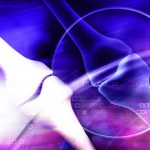Researchers have been able to induce the needed cell line in experiments. The idea now is to develop a self-inactivating lentivirus that encodes CECR1. “Gene therapy might be an option for the future,” Dr. Brogan said.
Paul Brogan, MBChB, PhD, … described a disease that doesn’t fit neatly into a box.
Mechanism Studies Continue
Ivona Aksentijevich, MD, a staff scientist with the National Human Genome Research Institute in Bethesda, Md., said researchers are trying to further understand the genetic mechanisms underlying a spectrum of phenotypes associated with DADA2. She said clinical manifestations of the disease can vary greatly from patient to patient, or even among family members who carry the same pathogenic gene mutations, so the disease phenotype can’t be explained only by the mutant ADA2 genotype. This suggests a role for other genetic modifiers, epigenetic or environmental factors, she said.
She also said it’s not possible to predict based on genotype whether a patient will present with immunodeficiency, bone marrow failure, vasculopathy or recurrent strokes.
ADA2 protein is homologous to ADA1 protein that’s deficient in patients with severe combined immunodeficiency (SCID). ADA1 is highly expressed in lymphocytes, while ADA2 is expressed in activated myeloid cells. In addition, studies in model organisms showed ADA2 features properties of a growth factor and is important for development of fruit flies, frogs and mice.
Researchers also continue to investigate the role of ADA2 in angiogenesis and how the deficiency of ADA2 leads to vascular damage.
“The intriguing question is whether ADA2 regulates the differentiation of endothelial cells, or whether damage to endothelial cells is caused by activated myeloid cells,” said Dr. Aksentijevich. It’s possible, she said, that ADA2 enhances neovascularization, given that M2 macrophage differentiation is promoted by ADA2. Recent findings by another group suggest expression of ADA2 correlates with microvascular density in glioblastomas.
Researchers also wonder whether the lack of ADA2 deaminase function, similar to ADA1 deficiency in SCID, contributes to the bone marrow dysfunction seen in a subset of DADA2 patients. “The question is whether the bone marrow failure is due to an intrinsic defect in hematopoietic cells, or is the consequence of perturbations in the bone marrow environment,” she said. ADA1 and ADA2 bind to different subsets of immune cells to modulate immune responses, and blood samples from ADA2-deficient patients showed a reduction in leucocyte subsets such as B cells and neutrophils.2
“It appears,” Dr. Aksentijevich said, “that ADA2 contributes to the disease pathogenesis both through its growth factor-like function, and also possibly through the lack of its deaminase function.”


